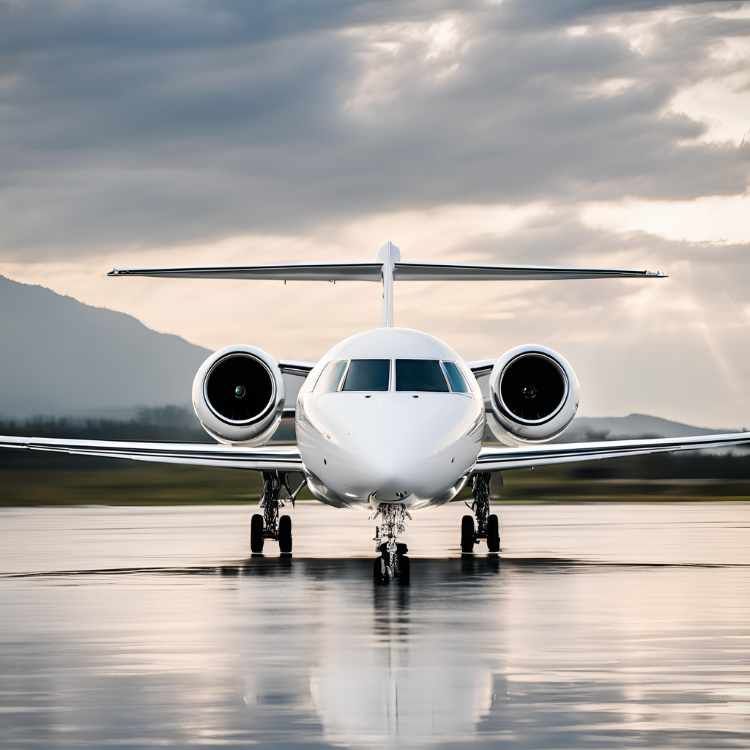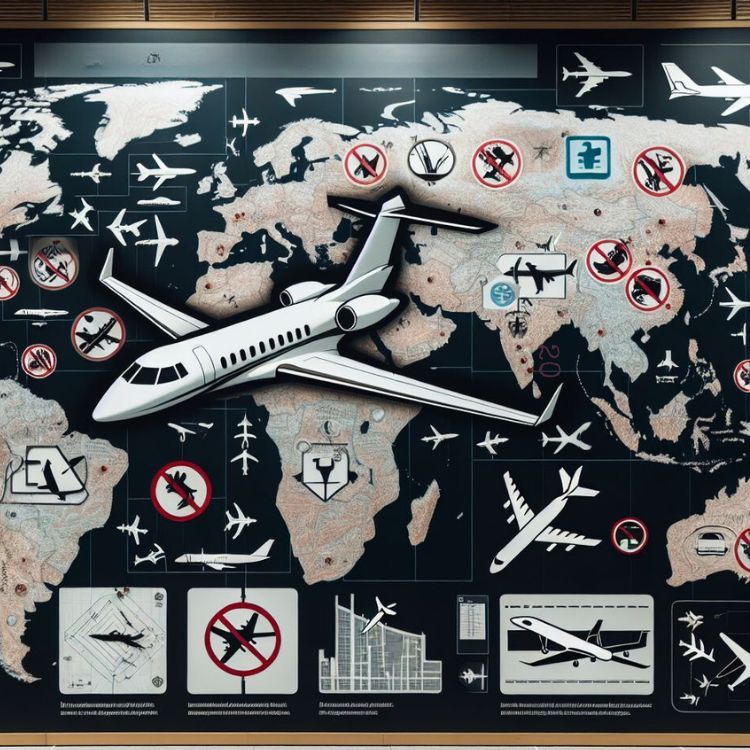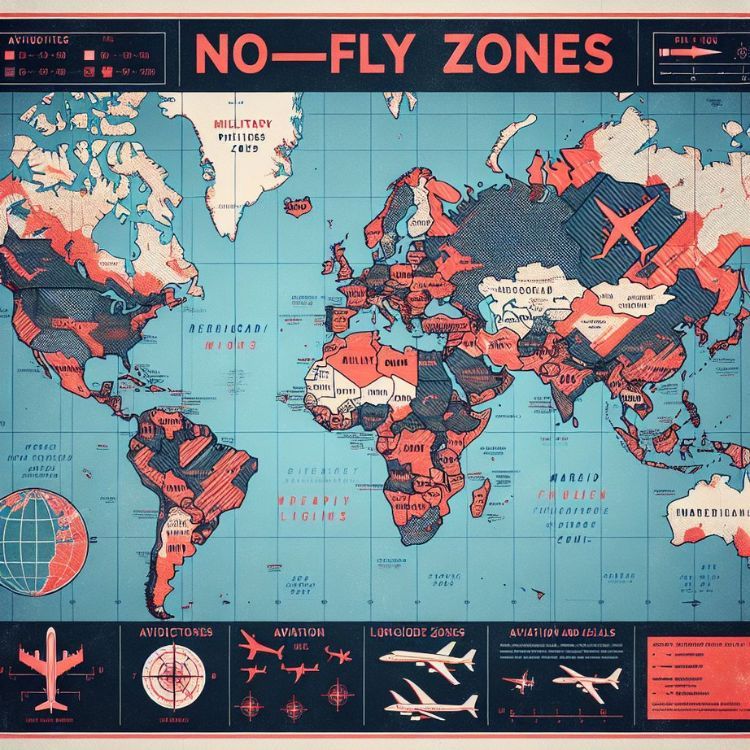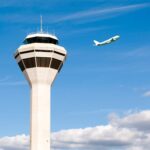
Key Takeaways
-
Private jets are subject to specific landing regulations depending on the airport and airspace.
-
Not all airports are accessible to private jets; permissions and runway compatibility are key factors.
-
Weather conditions significantly influence where and when a private jet can land.
-
Controlled and uncontrolled airspaces have different rules affecting private jet landings.
Emergency situations may allow for deviations from standard regulations, but with potential legal consequences.

Private Jet Landing Permissions Explained
When you picture a private jet, you might imagine the epitome of freedom in the skies. However, the reality is that even these symbols of luxury must adhere to a complex web of regulations. From the size of the aircraft to the type of airspace, many factors determine where a private jet can touch down.
The Basics of Private Jet Landing Rights
Let’s start with the basics. Private jets, much like their commercial counterparts, need permission to land at airports. This permission comes in the form of landing rights, which are granted by airport authorities and are based on several criteria, including the jet’s size and the airport’s capacity.
Most importantly, pilots must file a flight plan that includes their intended destination and any alternate airports in case of changes in-flight. This plan is essential for coordinating with air traffic control and ensuring the safe operation of all aircraft in the area.
Therefore, before taking off, it’s crucial to ensure that your intended destination is equipped to handle your aircraft and that you have the necessary permissions for landing.
Understanding Airport Classifications
Airports are not all created equal, and this is especially true when it comes to private jet landings. Airports are classified into various types based on factors such as runway length, facilities, and services available. Here’s a quick rundown:
-
Commercial Airports: Usually equipped to handle all types of aircraft, including large private jets, but may require slots due to high traffic.
-
General Aviation Airports: These airports cater specifically to private and non-commercial aviation, often providing more flexibility for landing times and services.
-
Private Airfields: Owned by individuals or corporations, these may have restricted access and require special permission to land.
Choosing the right airport is a balancing act between proximity to your final destination and the services you require upon landing.
Aircraft Size and Airport Compatibility
Not every jet can land at every airport. The size of the aircraft is a determining factor in whether an airport’s runway can accommodate it. Smaller jets have more options, as they can land on shorter runways, while larger jets need longer runways to ensure a safe landing.
Runway Requirements for Different Jet Sizes
Each private jet has a minimum runway length requirement, which varies depending on the jet’s size and weight. Here are the typical runway lengths needed for different categories of private jets:
-
Light Jets: Require at least 3,000 to 4,000 feet.
-
Midsize Jets: Need between 4,000 to 5,500 feet.
-
Heavy Jets: Require runways of 5,500 feet or more.
Besides that, airport elevation and the surrounding terrain can also affect these requirements. It’s always best to check with the specific airport and your jet’s operating manual for precise figures.
How Aircraft Performance Influences Landing Options
Aircraft performance is another critical piece of the puzzle. Pilots must consider their aircraft’s capabilities, including takeoff and landing distances, which are influenced by factors such as fuel load, passenger count, and current weather conditions.
Because private jets are often used for direct flights to remote destinations, pilots must be especially diligent in their pre-flight planning to ensure they can safely land at smaller, less equipped airports.
For example, a private jet designed for short takeoff and landing (STOL) capabilities will have more flexibility in choosing landing sites compared to one without those features.
Weather plays a significant role in aviation, and it’s no different for private jets. Pilots must constantly assess the weather conditions to ensure a safe landing. Adverse weather can lead to visibility issues, turbulence, and unsafe runway conditions, all of which may prevent a jet from landing at the intended destination.
Navigating Meteorological Challenges
For private jets, advanced planning for weather conditions is paramount. Pilots use a range of tools and resources to monitor the weather, including satellite imagery, weather radars, and reports from meteorological services. They need to be prepared to alter their flight path or choose an alternate airport if conditions at the intended destination are not favorable.
For example, if fog is reducing visibility at a small airport without advanced Instrument Landing Systems (ILS), a pilot may need to divert to a larger airport with the necessary technology to assist in landing.
Technology’s Role in Weather Prediction for Safe Landings
Modern technology plays a crucial role in assisting pilots with safe landings in challenging weather. Technologies like Enhanced Flight Vision Systems (EFVS) allow pilots to see through low visibility conditions, and when paired with ILS, can facilitate a safe landing almost anywhere, provided the airport is equipped for such technology.
However, not all airports have these advanced systems, and private jet operators must be mindful of the capabilities at their disposal when planning flights.
How Airspace Regulation Impacts Landing Flexibility
Airspace is divided into controlled and uncontrolled sectors, and each has its own set of rules. Controlled airspace is monitored by air traffic control (ATC), which coordinates aircraft movements to ensure safety. Uncontrolled airspace, on the other hand, does not have such oversight, allowing for more freedom but also requiring pilots to be more vigilant.
Differentiating Between Controlled and Uncontrolled Airspace
In controlled airspace, a private jet must have clearance from ATC to enter and land. This clearance is based on traffic, weather, and other factors. In uncontrolled airspace, pilots are free to land at any suitable airfield without the need for such clearance, as long as they comply with general aviation rules and the airfield’s regulations.
It’s important to note that even in uncontrolled airspace, there are still rules to follow, such as maintaining communication with other aircraft and adhering to visual flight rules (VFR) or instrument flight rules (IFR) depending on conditions.
Flight Plan Coordination with Air Traffic Control
When flying into controlled airspace, coordination with ATC is key. This involves filing a detailed flight plan, maintaining regular communication, and following ATC instructions for routing and altitude changes. It’s essential for safety and for minimizing disruptions to other airspace users.
For instance, if a private jet is flying into a busy airspace like that around New York City, the pilot must be in constant communication with ATC to ensure a smooth approach and landing among the numerous other flights in the area.
Private Jets and Public Airports: A Special Relationship
Private jets often use public airports, and this relationship comes with its own set of considerations. While private jets can land at public airports, they usually do so at Fixed Base Operators (FBOs), which are private jet terminals offering a range of services.
Accessing Slots at Congested Commercial Airports
At busy commercial airports, landing slots for private jets can be limited. Pilots or their flight departments must secure these slots in advance, especially during peak travel times or events. This often requires coordination well ahead of the planned flight.
For example, during major sporting events like the Super Bowl, private jet traffic increases significantly, making it essential to book slots early to ensure access to the desired airport.
FBOs: The VIP Gateway for Private Jet Passengers
FBOs are the gateways for private jet passengers at public airports. They provide amenities such as lounges, meeting rooms, and concierge services. FBOs also handle the aircraft’s ground services, including refueling, maintenance, and parking.
Choosing the right FBO can make a significant difference in the passenger experience, with some offering luxury services that rival those of the finest hotels.
Restricted Zones: Where You Can’t Land Your Jet
Even with all the freedom that private flying offers, there are places where you simply cannot land your jet. These include military bases, certain government facilities, and environmentally protected areas. Flying into these areas without permission can result in hefty fines and legal consequences.
Military and No-fly Zones: Off-Limits for Private Aircraft
Military installations and no-fly zones are strictly off-limits for private aircraft. These areas are established for national security and safety reasons, and breaching them can lead to serious repercussions.
For example, the airspace around Washington, D.C. is highly restricted, and unauthorized entry can lead to interception by military aircraft and potential legal action.
Environmental Protections: Sanctuaries and Reserves with Flight Restrictions
Environmental protection areas, such as wildlife sanctuaries and nature reserves, may also have flight restrictions to prevent disturbance to the ecosystem. Pilots must be aware of these areas and plan their flight routes accordingly.
Take, for instance, the National Parks in the United States, where overflight regulations exist to preserve the natural quiet and protect wildlife.
Emergency Landings: Staying Safe When Plans Change
In the event of an emergency, private jets may need to land at the nearest suitable airport, regardless of whether it’s a scheduled stop. Safety is always the priority, and regulations allow for deviations from the flight plan in such cases.
Procedures for Unplanned Stops
When an emergency landing is necessary, pilots must communicate the situation to ATC or, if in uncontrolled airspace, broadcast their intentions on the emergency frequency. They must then follow standard emergency procedures for landing and evacuation, if necessary.
An example of this would be a sudden medical emergency on board, requiring the pilot to divert to the nearest airport to seek medical assistance for a passenger.
Legal Repercussions and Fines for Non-compliant Landings
While emergencies are an exception, landing without proper clearance or in restricted zones can lead to legal issues. Authorities may impose fines, and in some cases, pilots may face suspension of their licenses.
It’s a reminder that while private jets offer a great deal of flexibility, pilots and operators must always be mindful of the regulations and restrictions that govern their operations.
International Borders and Private Flying
Crossing international borders in a private jet involves customs and immigration procedures similar to those for commercial flights. Pilots must ensure that they have all the necessary documentation for themselves, their passengers, and the aircraft.
Understanding Customs and Immigration Procedures
Upon landing in a new country, private jets must go through customs and immigration checks. This typically involves providing passenger manifests, passports, and any required visas, as well as declarations of health, especially during times of global health concerns.
For instance, when flying from the United States to Canada, private jet passengers must clear customs upon arrival, and pilots must file an eAPIS (Electronic Advance Passenger Information System) report prior to departure.
Adherence to International Air Travel Agreements
International flights must also comply with air travel agreements between countries. These agreements cover aspects such as overflight rights, landing rights, and fees associated with using foreign airspace and airports.
It’s essential for private jet operators to be familiar with these agreements to avoid violations and ensure smooth international travel.
The Future of Private Jet Landings
The landscape of private aviation is continuously evolving, with new technologies and regulations shaping the future of how and where private jets can land. Innovations in aircraft design, avionics, and airport infrastructure are pushing the boundaries of what’s possible, ensuring that private jet travel remains at the forefront of convenience and safety.
Technological Innovations Shaping Landing Regulations
Technological advancements are revolutionizing the private jet industry. We’re seeing the emergence of electric and hybrid jets, which promise to be more environmentally friendly and may require different infrastructure for landing and recharging. Additionally, improvements in navigation and communication systems allow for more precise and safer landings, even in challenging conditions.
For example, consider the use of GPS-based navigation systems that provide real-time data to pilots, enabling them to make adjustments for weather, traffic, and no-fly zones on the fly. This technology enhances the pilot’s situational awareness and can lead to more flexible landing options.
Global Trends in Private Travel and Their Regulation Impact
The demand for private air travel is growing, and with it comes increased attention from regulatory bodies to ensure safety and compliance. This includes stricter oversight on aircraft maintenance, pilot training, and environmental regulations. As the industry grows, we can expect to see more harmonization of international regulations to facilitate smoother travel between countries.
Moreover, as concerns about sustainability and environmental impact grow, we might see regulations that incentivize the use of greener technologies, potentially affecting where and how private jets operate.
Frequently Asked Questions
In the world of private jet travel, questions abound regarding the capabilities and limitations of these luxurious aircraft. Let’s clear up some of the most common curiosities.
Can Private Jets Land in Residential Areas?
Private jets are typically not allowed to land in residential areas due to safety, noise, and zoning regulations. Airports and designated airfields are the appropriate places for aircraft to land. There are, however, some exceptions for helicopters and STOL aircraft in certain areas with the proper permits and community agreements.
What Happens if a Private Jet Violates a No-fly Zone?
Violating a no-fly zone is a serious offense that can lead to interception by military aircraft, fines, and legal action. In some cases, the pilot’s license may be at risk of suspension or revocation. Compliance with airspace restrictions is non-negotiable for the safety and security of all.
Remember the incident in 2005 when a private Cessna aircraft wandered into restricted airspace in Washington, D.C.? The Capitol was evacuated as a precaution, showcasing the gravity of such a breach.
Are There Any Countries Where Private Jets Cannot Land?
While there are no countries completely closed to private jets, there are specific airports and regions within countries that may be off-limits due to security, political, or environmental reasons. It’s essential to verify the destination’s accessibility before planning a trip.
How Are Emergency Landing Locations Determined?
-
Pilots use onboard navigation systems to identify the nearest suitable airport or airfield.
-
Air traffic control can provide assistance and direct the aircraft to an appropriate location.
-
Consideration is given to the nature of the emergency, whether medical, mechanical, or weather-related.
For instance, if an aircraft experiences engine trouble, the pilot will look for an airport with maintenance facilities capable of handling the issue.
Can Private Jets Land at Any Airport During a Pandemic?
During a pandemic, restrictions on air travel can vary widely. Private jets may still land at many airports, but there may be limitations based on the country’s entry requirements, quarantine mandates, and health screening procedures. It’s crucial to stay informed about the latest travel advisories and restrictions.
For example, during the COVID-19 pandemic, some countries imposed strict lockdowns that limited or completely halted air travel, while others allowed flights with strict health protocols in place.
Set out on an unforgettable journey! Click here to request a quote or commence your extraordinary travel experience: Launch Your Adventure.













